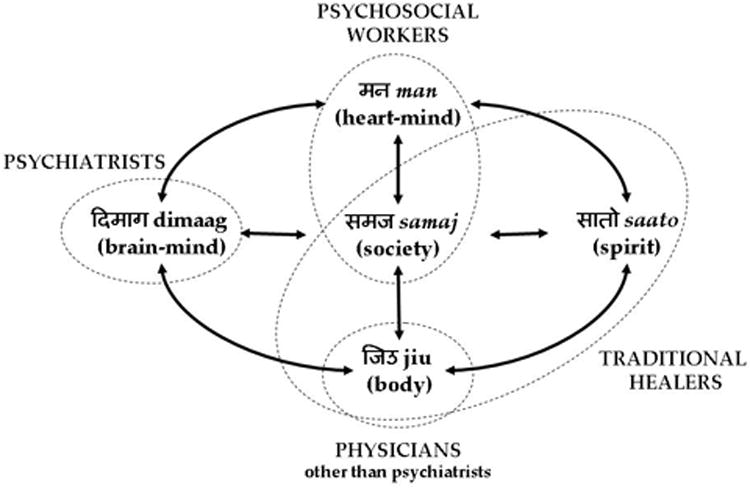Figure 1.

The framing of suffering by healers in Nepal through Mind–body relations.
Note: Solid arrows represent interrelations among the divisions of self. Dotted ellipses represent healing domains. For example, traditional healers often explain suffering in terms of saato, jiu and samaj (society), while psychiatrists reframe suffering according dimaag. We acknowledge that this schematic simplifies the divisions, but we do this for heuristic purposes to highlight how the primary domains of different healing disciplines reframe and reconstitute suffering. Also note that “traditional healers” encompasses a wide range of practitioners from varied ethnic and religious backgrounds and is overly simplistic; although using the category in this way orients us with medical discourse, we strategically do so for the purposes of this article.
